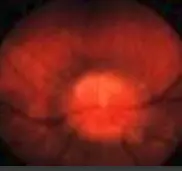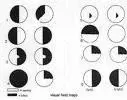Optic Nerve Disease
Optic Neuritis
Optic Neuritis is inflammation of the optic nerve and is usually idiopathic but may be associated with multiple sclerosis in a significant number of cases.
The visual acuity is markedly reduced and an afferent pupillary defect is present.
The optic disc initially appears hyperemic and swollen.
The visual acuity usually recovers; however, repeated episodes of optic neuritis may lead to permanent loss of vision.

Visual Pathway Disorders
Homonymous Hemianopia - is loss of vision on one side of both visual fields and may result from occlusion of one of the posterior cerebral arteries with infarction of the occipital lobe.
- Other vascular abnormalities occurring in the middle cerebral artery distribution may produce a hemianopia, but usually, other neurological signs are prominent.
- Any patient with a hemianopia needs a CT or MRI to localize and identify the cause.


Cortical Blindness
Cortical Blindness: A rare extensive bilateral damage to the cerebral visual pathways results in complete loss of Vision. This condition is referred to as cortical, central, or cerebral blindness.
As the pathways serving the pupillary light reflex separate from those carrying visual information at the level of the optic tracts, a patient who is cortically blind has normal pupillary reactions. Thus, a patient with normal fundus examination along with normal pupillary reactions, most likely has cortical blindness.